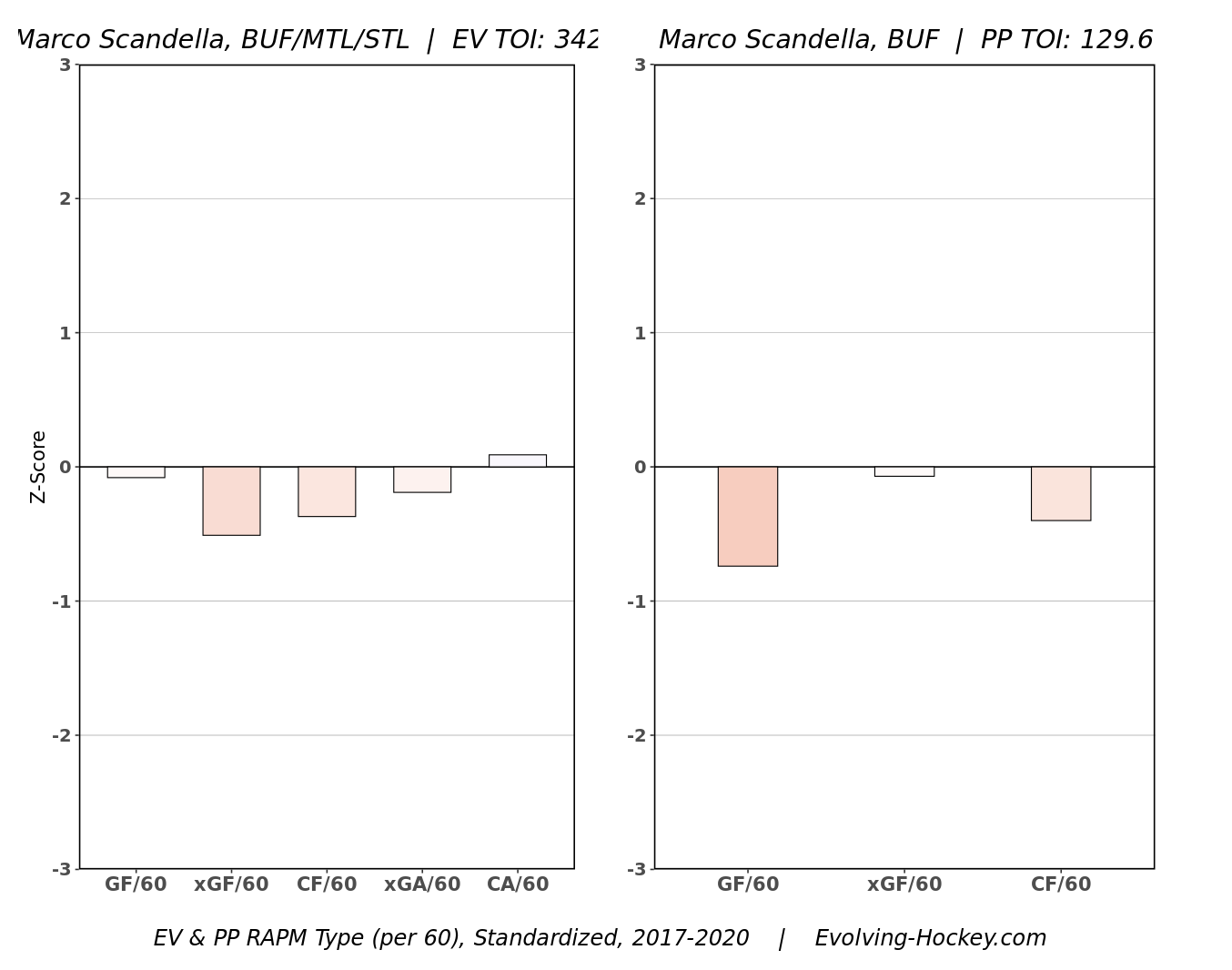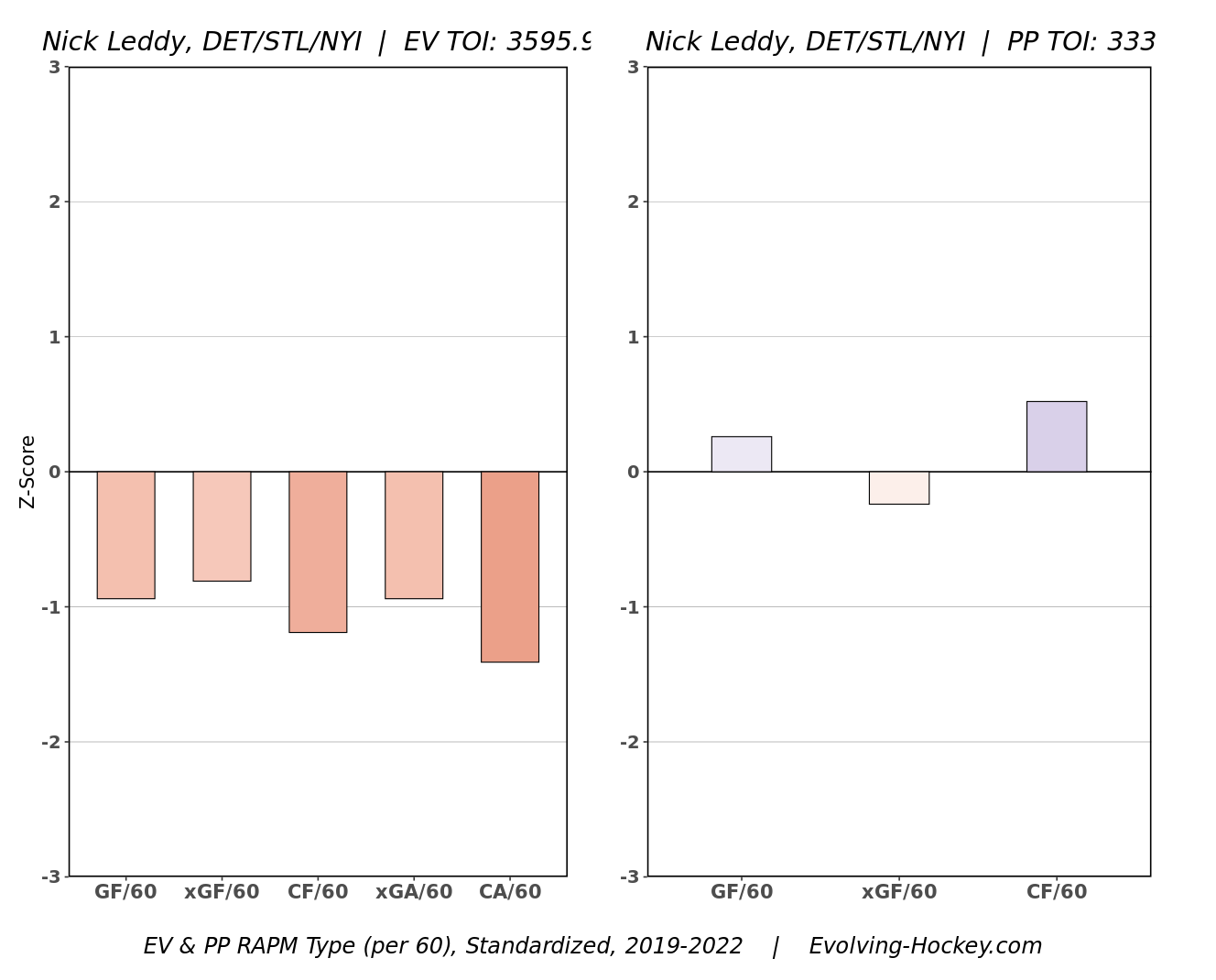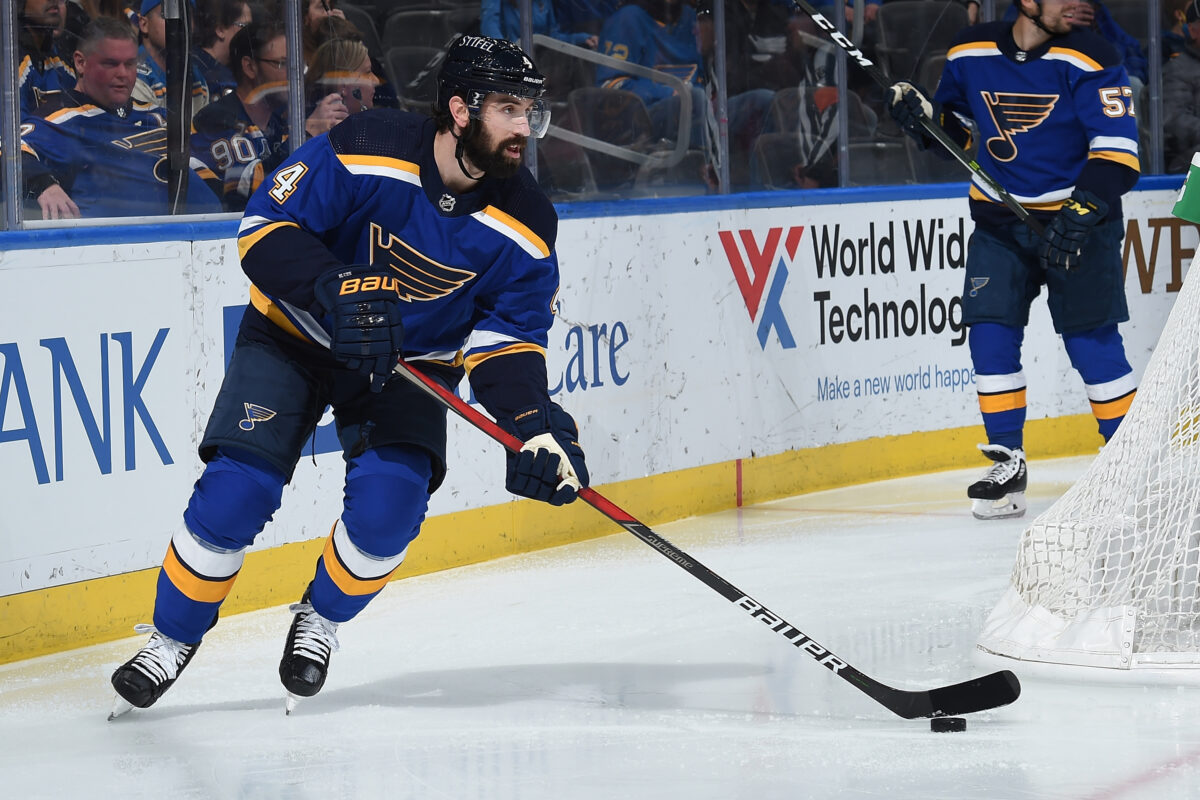St. Louis Blues general manager Doug Armstrong doesn’t like trading for rentals at the deadline. When he does acquire a player on an expiring contract, he usually tries to extend him. So it was hardly a total shock when news broke on the first day of free agency that he had re-signed free agent defenseman Nick Leddy. But the contract’s four-year duration and the $4 million average annual value (AAV) surprised some. Leddy averaged over 21 minutes with the Blues in his limited time there, so the contract isn’t entirely unwarranted, but it is reminiscent of a contract that has become an albatross for Armstrong: the Marco Scandella extension.
Related: Early Reactions to Blues’ 2022 Free Agency Additions
Like Leddy, Armstrong offered a four-year contract to Scandella after acquiring him at the trade deadline. Like Leddy, Scandella looked great in his short tenure with the Blues before the extension, despite having struggled for several seasons prior. Leddy is a year older than Scandella was when he signed his contract. And the latter’s deal very quickly became a curse for the Blues rather than a blessing — in fact, it led at least indirectly to the departure of David Perron in free agency. So is Armstrong repeating the same mistake by making this move now? Let’s take a closer look.
Scandella and Leddy Similar Before St. Louis
Since Leddy has only played 20 regular season games with the Blues, it’s not fair to compare the two players’ time in St. Louis. But we need to look carefully at both players’ careers heading into becoming a Blue. RAPM Charts from Evolving-Hockey allow us to do that by grading the player on several key metrics at even strength and on the power play. The following charts will reflect both players’ three seasons prior to being acquired by the Blues (finishing with the season in which the trades took place and after which the contract was signed).


Worryingly, Scandella grades out more favorably than Ledy does by a good amount at a glance. Scandella had a decent 2017-18 season, playing all 82 games and averaging 23 minutes a night. But he struggled the following season and was traded to the Montreal Canadiens by the Buffalo Sabres shortly into the 2019-20 season. He then was flipped to the Blues at the trade deadline, a move that received immediate criticism from some. But, like with Leddy, he saw quick success playing alongside Colton Parayko, and Armstrong extended him in April, during the COVID-19 pause before the playoffs had even started. That decision haunts the Blues, as his contract is now an anchor on the team’s salary cap.
Leddy’s story is eerily similar. He had a fine career with the New York Islanders, his second destination after winning a Stanley Cup as a 21-year-old with the Chicago Blackhawks. But he started to struggle with injuries, and his hefty salary cap hit made him expendable. He moved to the Detroit Red Wings, where he accrued value as a playoff rental. The Blues sacrificed a second-round pick, Oskar Sundqvist, and Jake Walman to acquire Leddy, along with depth addition Luke Witkowski. Leddy also played alongside Parayko many times and also looked very strong. He did suffer an injury that kept him out of key playoff games, and the Blues didn’t re-sign him until free agency day. But the similarities are strong: both played especially well in a brief audition with St. Louis and were rewarded. Is there hope that the decision with Leddy will work out better than with Scandella?
Leddy’s Excellent Transition Game
One area where Leddy excels that Scandella does not is in puck movement. He transitions the puck from end to end about as well as anyone in the NHL. It’s a valuable skill, but strangely, not one that seems to affect his on-ice results. In fact, his transition metrics seem to be more of an anomaly than anything, according to some analysts.
Final Analysis: Armstrong’s Big Gamble
If the Leddy extension goes sour, it wouldn’t be the first time Armstrong’s reticence to lose rentals meant a bad contract on the books. With this addition, he risks repeating the mistake he made with Scandella. But he isn’t overpaying for the player. The hefty extension given to Erik Gudbranson by the Columbus Blue Jackets and the costly contract the Red Wings gave Ben Chiarot prove that a four-year contract at or above $4 million is probably what the market demanded to keep Leddy. The only questions now are whether it was necessary to keep him, and whether the decision to will pay off.

Currently, the Blues have $26.7 million committed to Justin Faulk, Parayko, Krug, Leddy, and Scandella for the next two seasons. It’s an astronomical total — the third highest in the league, trailing only the Boston Bruins and Colorado Avalanche — for a team that finished 29th in expected goals against last season. If Armstrong can shed salary elsewhere from this group, keeping Leddy begins to make more sense. But signing a player without the guarantee of other moves is risky. At best, Leddy will be a serviceable second-pair defenseman who probably transitions to the third pair as his contract winds down (and becomes cheaper based on yearly salary). At worst, he will immediately become an ugly eyesore on the team’s salary cap picture, as did Scandella before him. It’s a high-risk gamble by Armstrong and one the team probably didn’t need to make.